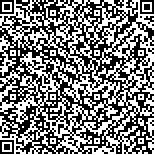洪钱沁,李瑾,朱飞龙,等.非小细胞肺癌合并2型糖尿病患者运动耐量及通气效率的临床特点[J].中华物理医学与康复杂志,2022,44(9):805-811
扫码阅读全文

|
| 非小细胞肺癌合并2型糖尿病患者运动耐量及通气效率的临床特点 |
|
| |
| DOI:10.3760/cma.j.issn.0254-1424.2022.09.009 |
| 中文关键词: 非小细胞肺癌 2型糖尿病 心肺运动试验 运动耐量 通气效率 |
| 英文关键词: Non-small cell lung cancer Diabetes Cardiopulmonary exercise testing Exercise tolerance Ventilatory efficiency |
| 基金项目:徐州市国家临床重点专科培育项目(2018ZK002);徐州市引进临床医学专家团队项目(2018TD007);江苏省科教强卫工程青年医学人才项目(QNRC2016376) |
|
| 摘要点击次数: 4232 |
| 全文下载次数: 4157 |
| 中文摘要: |
| 目的 探讨非小细胞肺癌(NSCLC)合并2型糖尿病(T2DM)患者运动耐量和通气效率的特点。 方法 根据胸外科数据库和电子病例资料筛选出合并T2DM的NSCLC患者(48例),使用倾向性评分法在病例中1∶1匹配出单纯肺癌患者(48例),据此分为合并T2DM组及未合并T2DM组,且所有患者行肺切除术前完成心肺运动试验(CPET),另择同期行CPET的健康体检者作为健康对照组(24例),对CPET结果进行分析,包括静态肺功能指标、CPET核心指标、运动耐量及心率恢复指标和通气效率及气体交换指标。 结果 与健康对照组相比,合并T2DM和未合并T2DM组的峰值摄氧量(VO2peak)、无氧阈(AT)及峰值氧脉搏(peak O2pulse) 均降低,二氧化碳通气当量斜率(VE/VCO2slope)及最低值(VE/VCO2nadir)均上升(P<0.01);与未合并T2DM组相比,合并T2DM组VO2peak、峰值公斤摄氧量(peak VO2/kg)及最大功率(WRpeak)均降低,VE/VCO2slope、VE/VCO2nadir均升高(P<0.05)。与健康对照组相比,在AT和峰值运动时,2组NSCLC患者的VO2和VCO2均下降(P<0.05),且峰值时合并T2DM组较未合并T2DM组更低(P<0.05)。热身和AT时,2组NSCLC患者的HR值较健康对照组高,与健康对照组和未合并T2DM组相比,合并T2DM组在恢复期1~3 min内心率下降减慢(P<0.05)。与健康对照组相比,AT和峰值时2组NSCLC患者的二氧化碳通气当量(VE/VCO2)上升(P<0.05);在热身和AT时,2组NSCLC患者的潮气末二氧化碳分压(PETCO2)均下降(P<0.05),合并T2DM组在峰值时低于健康对照组(P<0.05)。与健康对照组和未合并T2DM组相比,合并T2DM组的第1秒用力呼气容积(FEV1)、每分钟最大通气量(MVV)、呼气流量峰值(PEF)及其绝对值占预计值百分比(FEV1%,MVV%,PEF%)、用力肺活量绝对值占预计值的百分比(FVC%)和第1秒用力呼气容积占用力肺活量百分比(FEV1/FVC)均下降(P<0.05),且未合并T2DM组较健康对照组均降低,但差异无统计学意义(P>0.05)。 结论 与健康人相比,NSCLC合并T2DM的运动耐量及运动时通气效率均下降,未合并T2DM组的运动耐量下降,通气效率大致正常;CPET可为NSCLC合并T2DM患者肺切除术围手术期的风险评估提供依据。 |
| 英文摘要: |
| Objective To explore the aerobic exercise tolerance and ventilatory efficiency during cardiopulmonary exercise testing (CPET) of persons with non-small cell lung cancer (NSCLC) complicated by type 2 diabetes mellitus (T2DM). Methods Forty-eight persons with NSCLC and T2DM formed an NSCLC-T2DM group while another 48 persons with NSCLC but not T2DM formed an NSCLC-non T2DM group. Another 24 healthy counterparts were enrolled into the control group. All completed CPET before pneumonectomies were performed on those with NSCLC. Indexes of static pulmonary function, exercise tolerance, heart rate recovery, ventilation efficiency and gas exchange were computed. Results Compared with the control group, both NSCLC groups had, on average, lower peak oxygen uptake (VO2peak), lower anaerobic thresholds (ATs) and lower peak O2 pulse rates. They also had higher average VE/VCO2 slopes and VE/VCO2 nadirs. Compared with the NSCLC-non T2DM group, those with T2DM had a significantly lower average VO2peak and WRpeak, as well as significantly higher average VE/VCO2 slope and VE/VCO2 nadir. Compared with the control group, the average VO2 and VCO2 of both NSCLC groups was lower at the AT and during peak exercise, with the NSCLC-T2DM group′s averages significantly lower than those of the NSCLC-non T2DM group during peak exercise. During warm-up and at the AT, the NSCLC groups had a significantly higher average heart rate than the control group. Then, compared with the control group and the NSCLC-non T2DM group, the average heart rate in the NSCLC-T2DM group decreased significantly more slowly during the first three minutes of the recovery period. Compared with the control group, the VE/VCO2 values of the NSCLC groups were significantly higher at the AT and during peak exercise. During the warm-up and at the AT, the average partial pressures of end-tidal carbon dioxide in the NSCLC groups were significantly lower than among control group, and during peak exercise the NSCLC-T2DM group′s average value was significantly lower than the control group′s. Compared with the control group and the NSCLC-non T2DM group, the NSCLC-T2DM group′s average forced expiratory volume in one second, forced vital capacity, peak expiratory flow rate and maximum voluntary ventilation were all significantly lower. Conclusions Diabetes impairs the exercise tolerance and ventilation efficiency of persons with NSCLC. Without diabetes their exercise tolerance and ventilation efficiency would be impaired only slightly. CPET can provide a basis for risk assessment before pneumonectomy. |
|
查看全文
查看/发表评论 下载PDF阅读器 |
| 关闭 |
|
|
|